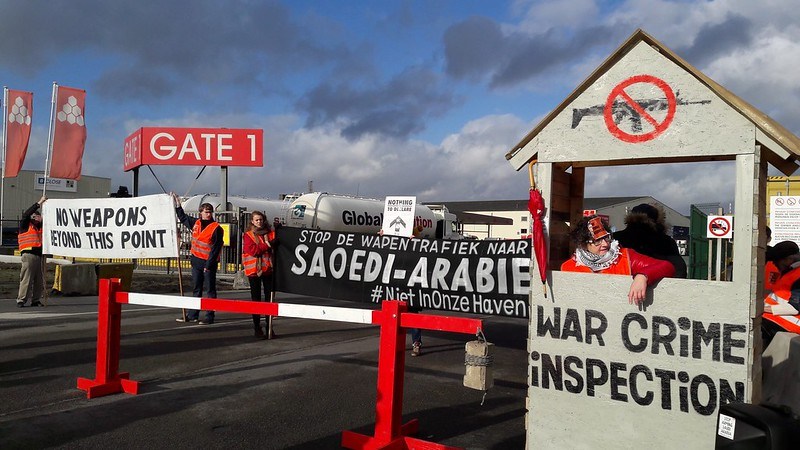While less reputed than Wallonia’s booming arms industry, which has seen a surge in exports as a result of the war in Ukraine, the less-developed Flemish sector saw record arms exports last year.
The exported military goods were valued at €143 million. As Russia’s invasion of Ukraine rumbles on, the Flemish arms industry is expected to record even better results this year, De Morgen reports.
This increase, according to Flemish Minister-President Jan Jambon, is largely due to “one big licensed transaction to the United States in 2021.”
Despite this, new information suggests that the Flemish arms industry concluded €491 million worth of export licences in the first seven months of this year alone. This figure has increased by nearly €120 million in the space of one month.
According to official figures from the Flanders Government, in 2019, the Flemish government approved just €63 million in arms licences in 2019.
This year, the Flemish region concluded a significant export arrangement with Ukraine that saw bullet-proof vests from Sioen Ballistic in Ardooie sold through a Flemish company based in Ukraine.
According to the Flemish Peace Institute, the war in Ukraine marks a tipping point for the fledgling arms industry in Flanders. “Decades of reduced investment in defence budgets have come to an end, and the Ukraine crisis has reinforced this trend,” said Diederik Cops.
Concerns grow about unknown end users
Cops also noted that the scope of the Belgian defence industry had broadened in recent years. Other specialised companies and research institutes had begun to ship technology abroad, especially from Louvain-based company Epic Blue, which provided artificial intelligence for aid workers. However, this technology could also equally be used by foreign militaries.
“Our research shows little knowledge and awareness among some civilian players. What if this technology falls into the wrong hands? It could make us a target of countries like Russia or China,” Cops stressed.
Like other regions in Belgium, Flanders maintains its own export policy, which it says pays special attention to human rights and avoids shipments to conflict zones. In the past, Flanders has refused licences for aircraft parts for Morocco and bulletproof clothing for Vietnam’s security forces.
Related News
- Switzerland blocks German shipment of ammunition to Ukraine
- EU approves new €500-million tranche for military equipment for Ukraine
Nevertheless, the Flemish Peace Institute warns that in around 80% of export licences, the true end user is unknown. For example, if the Federal government is in an agreement, potentially alongside European partners, to supply arms to a nation, the regions are hopeless to prevent their equipment from being resold.
This has happened in the past with Flemish-made wing parts, which ultimately made their way to military aircraft in Turkey, without the consent of the Flemish government.
Elsewhere in Belgium, the arms industry continues to boom. According to annual reports from the region, Wallonia exported €8.2 million in firearms, munitions, and other accessories in 2015-2021 alone. 76% of this went to Saudi Arabia, implicated in war crimes in its intervention in the Yemeni Civil War. According to Eurostat, in 2020, the defence sector contributed towards 28% of economic growth in Wallonia.
Liège-based weapons producer FN Herstal and Seraing-based armoured vehicle manufacturer John Cockerill are set to receive massive investment from the Federal Government, who have set aside €1.8 billion towards military research and development as part of its winter 2% GDP defence spending targets.

